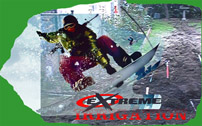

Due to pipe aging and the need for up to 6, instead of 4, electrically-controlled water valves, the entire manifold system was replaced. Fortunately, the 3/4" piping for the water source, which runs under the red patio, was deemed in sufficiently good condition to not require replacement (whew!). All piping, fittings, valves, and accessories in the entire new system (non-drip portions) is 3/4", unless noted otherwise.
This original source pipe terminates at the point labeled “Water Source” in the photo below. From there, the water travels up the vertical “nipple” (hey - not my terminology choice!) to the shutoff valve (red handle). Unlike the old system, the new installation has a shutoff valve, to allow irrigation maintenance without disabling water to the entire house.
As the pipe makes a turn to run horizontally, well above ground level, we encounter the sediment filter. Highly recommended for lawn sprinklers, it is mandatory for drip installations. It seemed easiest to just filter the entire water supply to the most stringent requirement (155 mesh). Note that if there had been more lawn sprinklers and therefore greater flow, this option might not have been possible. While i wanted to use a brass unit here, no such appropriate devices were readily available, so it is plastic, from the DIG drip irrigation product line.
After the filter, the pipe again turns and dips back underground to a standard 3/4" cross fitting. Just like the original system, the straight-out part of the cross is the always-on feed for the hose bibs, seen in the photo above as the opening to which the colorful pipe is pointing. In the photo below, it is partially obscured by the concrete slab. (The pipe needed some “assistance” to keep from pushing the manifold skyward, due to the angles forced on said pipe by the redwood roots). Again like the original system, the side exits of the cross feed the two manifold segments.

At this time there are only 5 electric valves needed, thus only 5 are seen in the photo. The manifold has a capped outlet for a 6th. vertical riser and valve, located between the water source and the cross. This outlet allows for expansion without the need to rebuild the manifold.
All pre-electric-valve piping is wrapped galvanized, the best choice of what code allows. The lawn feed (center valve) is also wrapped galvanized. The redwood feed (far right valve) was originally also going to be wrapped galvanized, but plans changed. Away from the danger of the redwood roots, SCH 40 PVC is perfectly adequate for the three drip systems. The photo shows the two western systems already in place, and the east system waiting for its vertical nipple.
Whenever possible, old valves were re-used. New valves are Rain Bird DAS-075/ASVF, which were chosen based upon Jess Stryker’s recommendation, availability, and their ability to work with the low water flows found in drip systems.

|

|

|

|

|
| the lawn | the east (driveway) drip | the west small plant drip | the west tree and large plant drip | the redwood zone |
The new controller did not materialize in a timely fashion in 2002. For the time being, both the front and back yard systems were cobbled together using the original 6-station mechanical controllers. The 30 min. maximum watering time was a major constraint, especially with the drip circuits.
After various delays, shopping and purchase of a new irrigation controller happened in 2005. (Hypertransport yourself to that section via the link in the previous sentence if you want to read about that now, or else you will eventually get there via the linear method.)